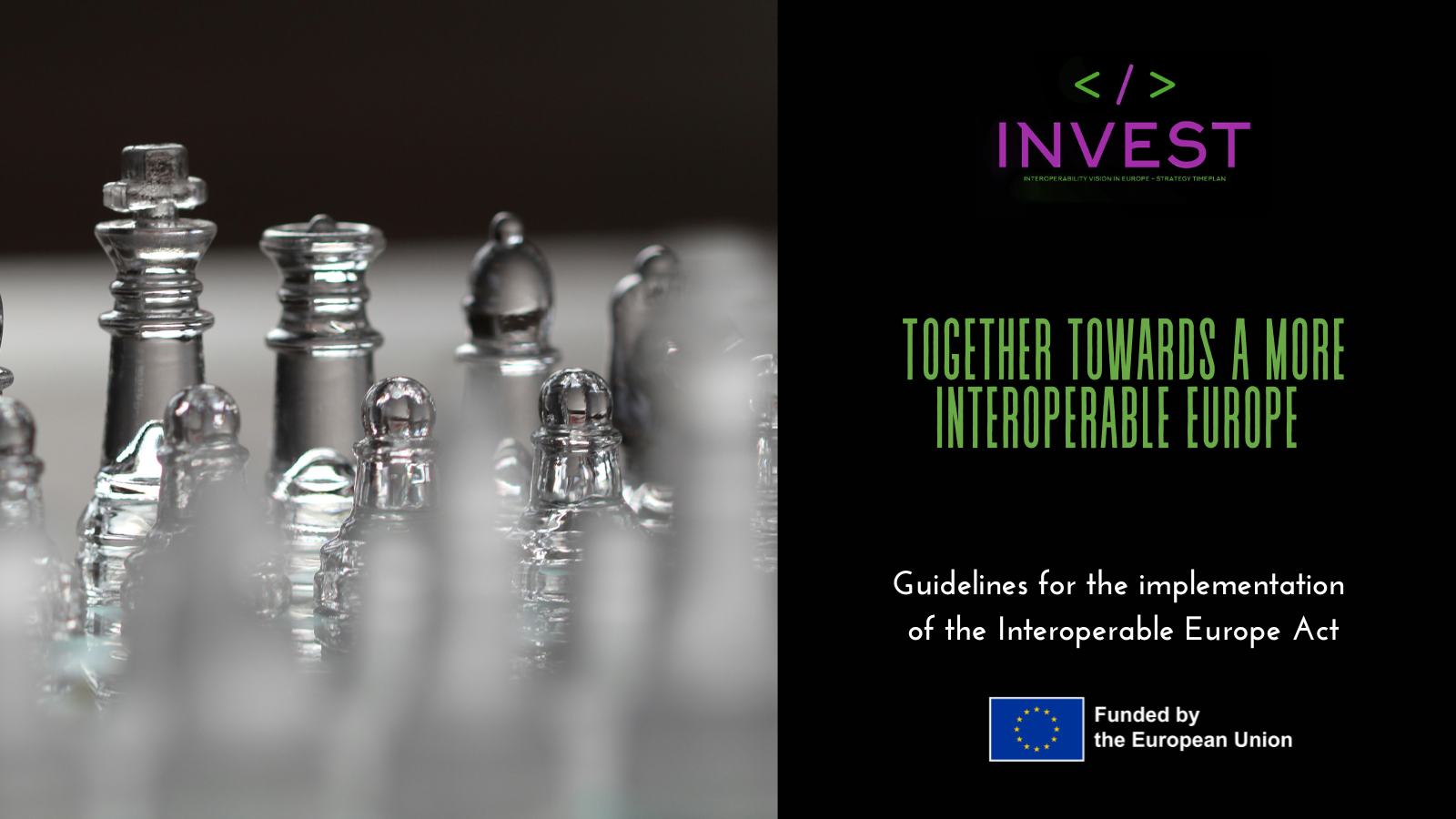
Imagine a Europe where public services cross borders as smoothly as people do. Where citizens and businesses can interact digitally in another EU country without bureaucratic barriers or technical incompatibilities. This vision is driven by the Interoperable Europe Act – and now we have an even clearer understanding of how its implementation can become a reality.
The Interoperable Europe webinar and the associated workshop held in the framework of the INVEST project, brought together experts from different Member States to consider what concrete actions are needed to implement the regulation. The result was a practical and user-centered roadmap built on six key areas.
Firstly, we need Common rules and feedback mechanisms. Interoperability cannot be achieved if regulations conflict with each other. Therefore, we must harmonize regulations at the EU level. We also need to build effective feedback mechanisms and integrate regulation and practice more smoothly.
The Interoperable Europe portal should be used more effectively. Harnessing the power of the Interoperable Europe portal means that the portal will become a practical tool, not just an information channel. To achieve this, we need more concrete content, e.g. success stories and case studies. Expert interviews and practical guides help professionals identify where and how they could be involved. Webinars, videos, and clear instructions for content production would help sharing experiences.
Generally, bringing expertise to the forefront – implementing solutions could sharpen the portal's line or role specifically as a tool for development. There is a need for interoperable solutions by sharing training materials and assessment criteria. The users want to have clear examples and tools for developers and see practical roadmaps for implementing solutions.
When working together towards a common goal we need a common language: standards and reference architectures. Understanding arises from common models. One need raised in the workshop is to standardize public administration processes from the perspective of life events. That means that public organizations should consider solutions from the perspective of the citizen's life situation, not from the needs of organizations. Also need for developing open, European standards and vocabularies and creating clear reference architectures to support development are needed.
Networking and expert collaboration; collaboration is not a side issue – it is at the core. Building expert networks and multidisciplinary groups is a key element in enabling success. Webinars and workshops support common understanding. Facilitating contacts and information exchange through the portal help forming communities.
User-centeredness at the core. The needs of users – especially smaller authorities – should guide the contents on the Portal. It should provide support for creating easily discoverable and understandable content. Also targeted training and support should be provided. In general, content should be built genuinely from the user's perspective.
The actions to achieve the goal could be put on a roadmap in five phases: establishing foundations, activating stakeholders, developing content and expertise, networking, and evaluating impacts. This phasing ensures that development is coherent and inclusive.
A common goal – a shared responsibility. The success of the Interoperable Europe Act does not rest on the shoulders of individual experts. It requires broad participation, a shared vision, and above all, action. Now is the right time to share expertise, participate in the development of the portal, and promote interoperability through practical examples.
An interoperable Europe is more than a vision – it is action. And it starts with each of us.

